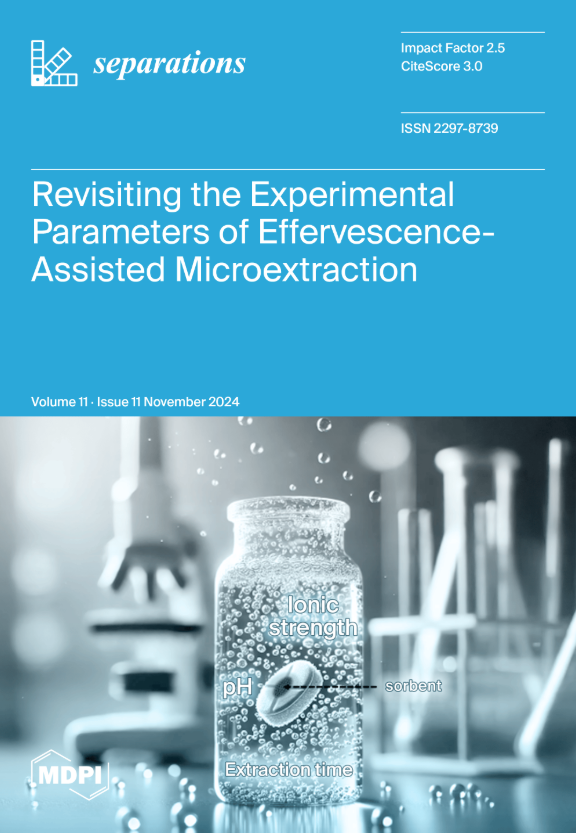湿式静电除尘器多污染物测试及性能指标测定研究
IF 2.5
4区 工程技术
Q3 CHEMISTRY, ANALYTICAL
引用次数: 0
摘要
湿式静电除尘器(WESP)通常安装在湿式烟气脱硫(WFGD)的下游,用于去除燃煤电厂烟气中的细颗粒和硫酸雾。对214套WESPs(94套金属板式WESPs、111套导电纤维增强塑料WESPs和9套柔性板式WESPs)的多种污染物减排特性和能耗数据进行测试分析,结果表明:WESPs对PM、PM2.5、SO3、液滴和Hg的去除率较高,且主要集中在≥75%、≥70%、≥60%、≥70%和≥40%。出口污染物浓度主要集中在≤5 mg/m3、≤3 mg/m3、≤5 mg/m3、≤15 mg/m3和≤5 μg/m3。比电耗和比水量集中在0.5~2.5 × 10−4 kWh/m3和≤10 × 10−6 t/m3。研究了多种污染物去除性能的相关性分析,确定了高效WESPs的定量评价指标要求。WESPs的高效指标PM排放浓度、SO3排放浓度、PM去除率、SO3去除率、压降、漏风率和比电耗分别为≤2.50 mg/m3、≤2.50 mg/m3、≥90%、≥85%、≤200 Pa、≤0.5%和≤1.3 × 10−4 kWh/m3。金属板型和玻璃钢型WESPs的比耗水量高效指标分别为≤2.50和≤0.66 × 10−6 t/m3。本研究可为后续超低排放机组节能增效提供有价值的参考。本文章由计算机程序翻译,如有差异,请以英文原文为准。
Study on Multi-Pollutant Test and Performance Index Determination of Wet Electrostatic Precipitator
A wet electrostatic precipitator (WESP) is typically installed downstream of wet flue gas desulfurization (WFGD) to remove fine particles and sulfuric acid mists from flue gases in coal-fired power plants. The emission reduction characteristics of multiple pollutants and the energy consumption data of 214 sets of WESPs (94 sets of metal plate WESPs, 111 sets of conductive Fiber Reinforced Plastic WESPs, and 9 sets of flexible plate WESPs) were tested and analyzed, and the results showed that: WESPs had a high removal efficiency on PM, PM2.5, SO3, droplets and Hg, and mostly concentrated in ≥75%, ≥70%, ≥60%, ≥70% and ≥40%, respectively. The outlet pollutant concentrations were mostly concentrated in ≤5 mg/m3, ≤3 mg/m3, ≤5 mg/m3, ≤15 mg/m3 and ≤5 μg/m3, respectively. Specific power consumption and specific water consumption were concentrated in the range of 0.5~2.5 × 10−4 kWh/m3 and ≤10 × 10−6 t/m3. The correlation analysis of multiple pollutant’s removal performance was studied and the quantitative evaluation index requirements of high efficiency WESPs were determined in this paper. The high efficiency indexes of WESPs, such as PM emission concentration, SO3 emission concentration, PM removal efficiency, SO3 removal efficiency, pressure drop, air leakage rate and specific power consumption, were ≤2.50 mg/m3, ≤2.50 mg/m3, ≥90%, ≥85%, ≤200 Pa, ≤0.5% and ≤1.3 × 10−4 kWh/m3, respectively. The high efficiency indexes of specific water consumption for metal plate WESPs and FRP WESPs were ≤2.50 and ≤0.66 × 10−6 t/m3, respectively. This study can provide valuable reference for the following energy conservation and efficiency improvement of ultra-low emission units.
求助全文
通过发布文献求助,成功后即可免费获取论文全文。
去求助
来源期刊

Separations
Chemistry-Analytical Chemistry
CiteScore
3.00
自引率
15.40%
发文量
342
审稿时长
12 weeks
期刊介绍:
Separations (formerly Chromatography, ISSN 2227-9075, CODEN: CHROBV) provides an advanced forum for separation and purification science and technology in all areas of chemical, biological and physical science. It publishes reviews, regular research papers and communications. Our aim is to encourage scientists to publish their experimental and theoretical results in as much detail as possible. There is no restriction on the length of the papers. The full experimental details must be provided so that the results can be reproduced. There are, in addition, unique features of this journal:
Manuscripts regarding research proposals and research ideas will be particularly welcomed.
Electronic files and software regarding the full details of the calculation and experimental procedure, if unable to be published in a normal way, can be deposited as supplementary material.
Manuscripts concerning summaries and surveys on research cooperation and projects (that are funded by national governments) to give information for a broad field of users.
The scope of the journal includes but is not limited to:
Theory and methodology (theory of separation methods, sample preparation, instrumental and column developments, new separation methodologies, etc.)
Equipment and techniques, novel hyphenated analytical solutions (significantly extended by their combination with spectroscopic methods and in particular, mass spectrometry)
Novel analysis approaches and applications to solve analytical challenges which utilize chromatographic separations as a key step in the overall solution
Computational modelling of separations for the purpose of fundamental understanding and/or chromatographic optimization
 求助内容:
求助内容: 应助结果提醒方式:
应助结果提醒方式:


